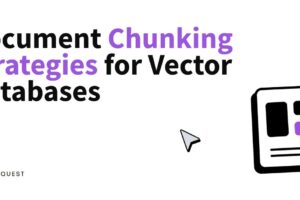
Why Seamless Integration with LMSes & Rostering Tools Is the New Currency in K-12 Digital Publishing
K-12 educational institutions are investing heavily in digital tools. This is evident in the US districts’ average usage of 2,739 different edtech tools in the 2023-24 school year alone. The use of such tools has become non-negotiable as teachers, students, and administrators want better tools to facilitate education. What they also want is for these tools to seamlessly work together. Against this backdrop, seamless integration with LMSes is no longer optional for K-12 publishers. It is the currency of adoption. Districts open their doors only to products that fit smoothly with their learning management systems and K-12 rostering tools.
What Schools & Districts Really Value Today
The value of your solutions is driven by key users:
Administrators measure returns in terms of ease of transition. They want tools that reduce IT costs and fit into their digital portfolio. Interoperability is not a luxury in education technology. Seamless integration with LMSes is a must-have now. Strong K-12 rostering tools increase accuracy, compliance, and efficiency.
For teachers, the value lies in minutes saved. They need single sign-on (SSO) and automatic rostering to reduce time spent helping students manage logins and manual setups.
Students get direct, frictionless access to content, learning apps, supplementary resources, collaboration platforms, and more with seamless integration with LMSes. This keeps their attention on learning, not on system errors or forgotten passwords. This,in turn, drives better engagement.
Schools and districts consider high-quality, engaging learning experiences as the high-yield outcome.
The Cost of Poor Integration for Publishers
In short, it’s a steep slope. Firstly, lack of interoperability creates barriers to adoption. Decision-makers filter out K-12 digital publishing platforms that do not support seamless integration with existing LMSes. Additionally, mass transition to an entirely new set of tools is both time- and cost-intensive. Plus, the added IT burden creates resistance from schools. For them, new systems become liabilities and not assets. Over time, publishers could lose revenue, experience thin profit margins, and see a shrunken market share. In effect, the absence of interoperability in education technology erodes your competitive edge.
Seamless Integration as a Value Driver
Content, i.e., learning resources, is no longer the center of school education. This position has been filled by plug-and-play modules that allow teachers to create flexible and personalized learning journeys. In the long term, seamless integration with LMSes offers K-12 publishers greater value in the form of reduced churn, stronger partnerships, and scalability across districts. The compounding dividend means less time spent ensuring retention and more driving expansion.
From Content Provider to Strategic Partner
Most importantly, seamless integrations with LMSes change how learning institutions and districts view publishers. Instead of transactional vendors, who are easily replaceable, Publishers who support integrations with K-12 rostering tools, DRM, etc., become strategic partners.
Districts want experts who can help strengthen their digital posture and not overload them with another cycle of reviews, integrations, and evaluations. K-12 digital publishing platforms with LMS integrations become partners in success when they align their offerings with the district’s learning ecosystem. This presents an opportunity to think beyond content creation and adopt an ecosystem thinking approach.
MagicBox’s MagicSync is a secure integration platform that helps manage subscriptions, K-12 rostering, crafting assessments and designing courses and assessments. MagicBox’s all-in-one integrations and compliance management solution streamlines educational processes. It is designed to help K-12 publishers deliver quality learning experiences through an educational ecosystem approach.
Integration: The New Market Differentiator
The global edtech market is projected to reach $773.06 billion by 2033, growing at a CAGR of 17.34% from 2025 to 2033. This growth will in part be driven by school districts increasingly prioritizing seamless integration with existing LMSes and rostering systems. Integration capabilities will determine the fate of K-12 digital publishing solutions.
Global standards for interoperability in education technology, such as LTI 1.3 and OneRoster, are critical in an interconnected future. They ensure security, interoperability, and compliance. API-based integrations with diverse tools, CRMs, and SISes are non-negotiable in any LMS ecosystem. Rostering platforms, such as Clever and ClassLink, eliminate manual class setup, improve data accuracy, and reduce IT workload, and hence can be expected to remain critical.
Publishers who invest early in seamless integrations with LMSes can future-proof their offerings, preparing them for the demands of both today’s districts and tomorrow’s innovations.
The Strategic Imperative for Publishers
In the K-12 digital publishing world, integration is the new currency, in fact, the new gold. It determines which products are adopted, trusted, and renewed.
Publishers must move beyond content alone. Delivering content that fits effortlessly into the learning ecosystems schools already use differentiates you from being a vendor to being a partner. Publishers who offer seamless course and assessment integration with LMSes early can secure stronger partnerships, scale faster, and stay competitive in a crowded market. It is the currency that buys market access, trust, and long-term growth. Partnering with MagicBox can help you bank on integration, grow your market value, and build lasting returns in K-12 publishing. Connect with the team to learn more.
Source link




